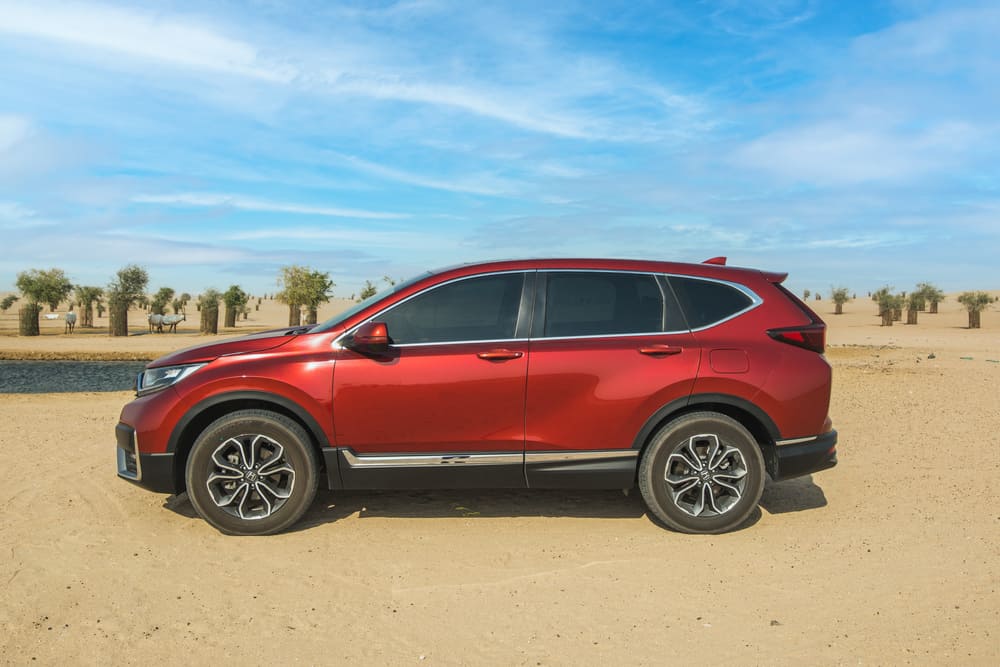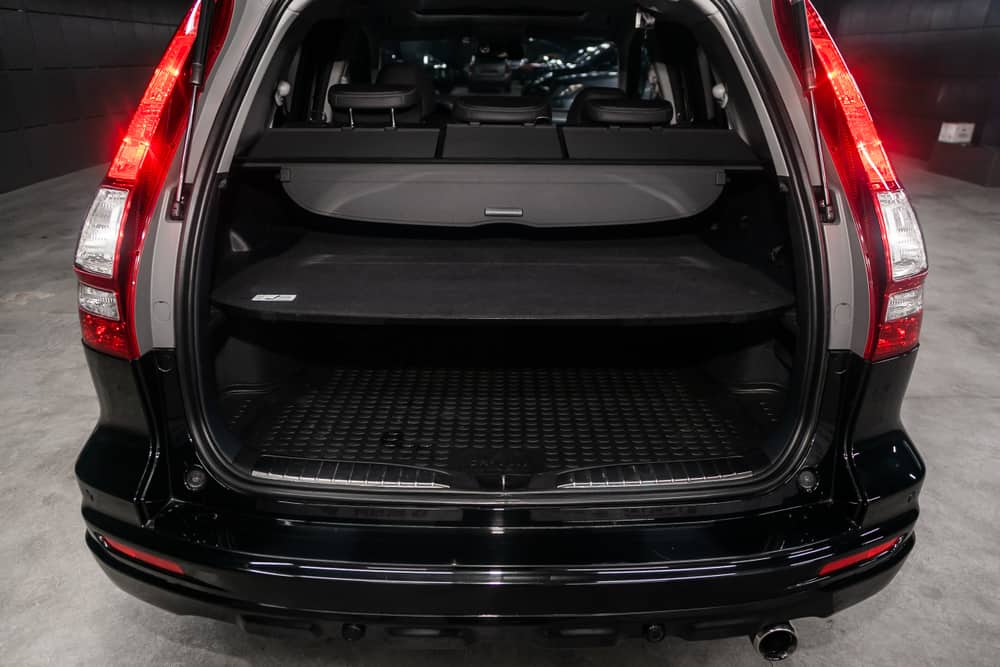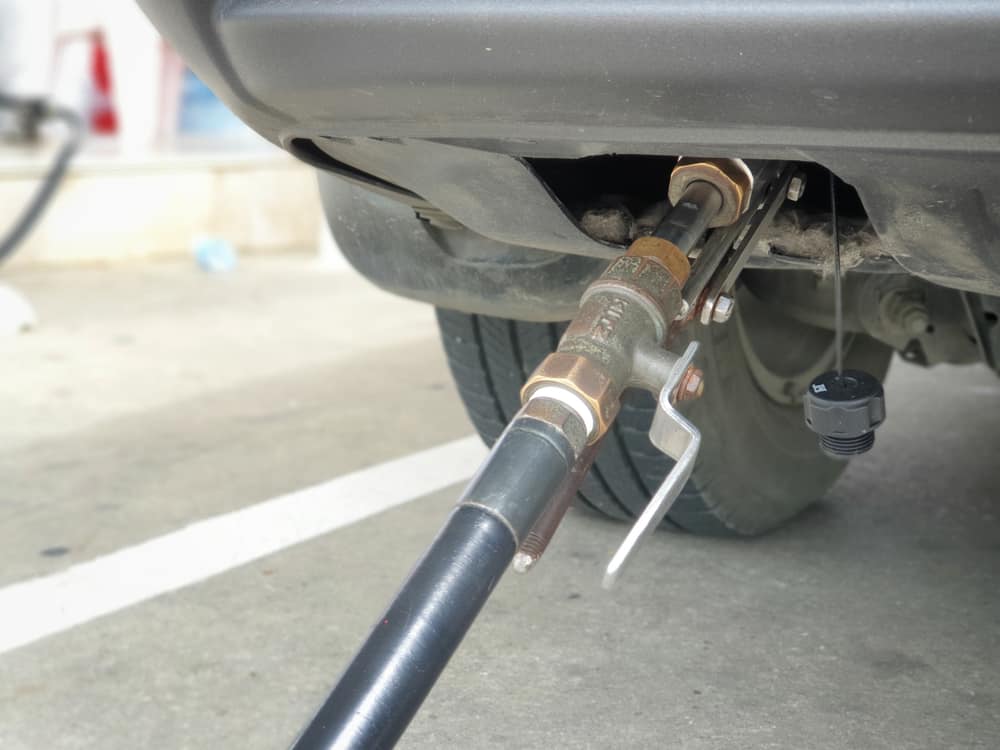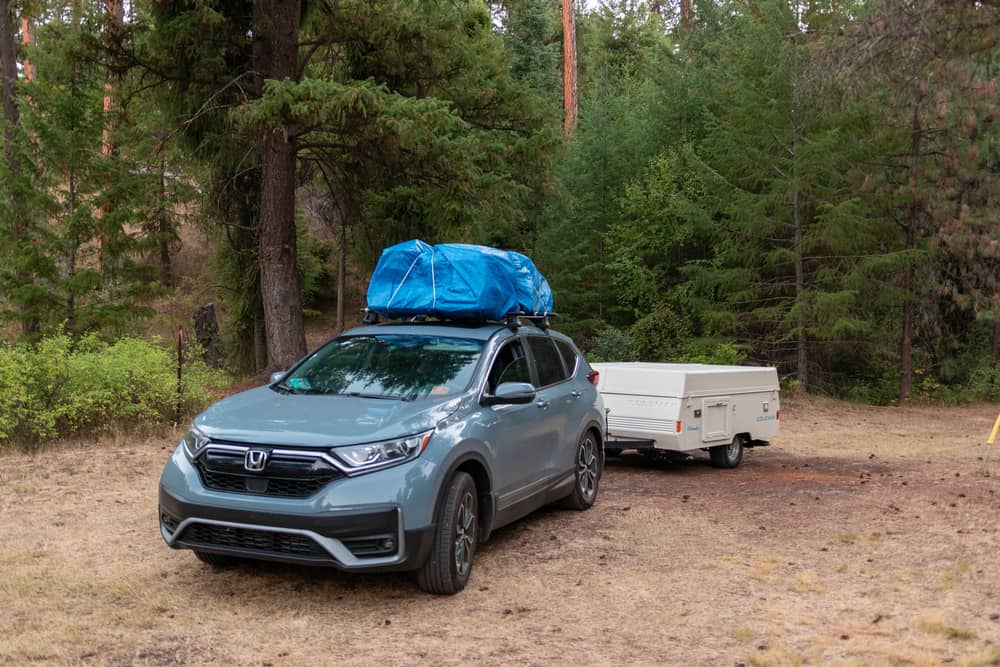
So, you’re ready to sell your family sedan and get a more versatile family transporter. There’s a good chance you’re considering buying an SUV (Sport Utility Vehicle) to carry more people and more stuff in comfort and style. Most importantly, you probably want the most cost-effective SUV money can buy.
In short, you want a Hybrid SUV like a Honda CR-V or a Toyota Highlander, right? Cool! Let’s compare ‘ponies with ponies.’
Comparative Key Indicators

Average Price (Paid)
2021 Honda CR-V EX Hybrid: $32,879
2021 Toyota Highlander LE Hybrid: $42,047
Transmission
2021 Honda CR-V EX Hybrid: Automatic
2021 Toyota Highlander LE Hybrid: Automatic
Drivetrain
2021 Honda CR-V EX Hybrid: All Wheel Drive
2021 Toyota Highlander LE Hybrid: All Wheel Drive
Engine (Gas/Electric)
2021 Honda CR-V EX Hybrid: 2.0 L/122kW
2021 Toyota Highlander LE Hybrid: 2.5 L/152kW
Number of Seats
2021 Honda CR-V EX Hybrid: 5
2021 Toyota Highlander LE Hybrid: 8
*Fuel Consumption (mpg)
2021 Honda CR-V EX Hybrid: 40 Urban/35 Highway
2021 Toyota Highlander LE Hybrid: 35 Urban/35 Highway
*Performance
2021 Honda CR-V EX Hybrid: 7.3/10
2021 Toyota Highlander LE Hybrid: 7.5/10
*Interior
2021 Honda CR-V EX Hybrid: 6.1/10
2021 Toyota Highlander LE Hybrid: 7.2/10
*Safety
2021 Honda CR-V EX Hybrid: 9.8/10
2021 Toyota Highlander LE Hybrid: 9.5/10
*Reliability
2021 Honda CR-V EX Hybrid: 79%
2021 Toyota Highlander LE Hybrid: 85%
*Critics’ Rating
2021 Honda CR-V EX Hybrid: 8.9/10
2021 Toyota Highlander LE Hybrid: 8.4/10
*J.D. Power Research
There you have the critical success factors for a hybrid SUV in a nutshell. Of course, the Honda CR-V Hybrid and the Toyota Highlander Hybrid, while both have dual-motor powertrains (one gas, one electric), differ in many ways.
Like any comparison between products in the same class, it’s up to the prospective buyer to decide what specific transportation tasks they want the vehicle to conduct. By identifying and listing your various transportation needs, you’ll be able to choose the best ‘crossover’ workhorse for your lifestyle.
So, let’s focus on the 2021 Honda CR-V and the 2021 Toyota Highlander SUV Hybrids to see, in detail, what each has to offer the prospective SUV owner beyond the specs and performance figures listed above.
Why Buy an SUV?

Market research statistics from the likes of J.D. Power indicate that the primary market for SUVs is the age group 25-54, comprising 43% of the overall SUV buyer base.
Why is this the case? You guessed it – ‘the growing family.’
Parents with young kids have their transportation work cut out for them. And it’s not just the kids that need moving. It’s all their gear and their friends and all their gear along for the ride.
Whether it’s people, pets, school project hardware, bicycles, camping, sports equipment, new furniture, you name it; growing families are synonymous with extra payload.
Using words like ‘utility’, ‘multipurpose’, and ‘crossover’ as their brand taglines, SUV manufacturers refine their design blueprints to get as much load capacity as possible into their new models. They also strive to improve the SUV’s fuel economy, ride comfort, road safety technologies, and in-car infotainment features.
Total Load Capacity Comparison

(With rear seats folded down)
- Honda CR-V-68.7 cubic feet
- Toyota Highlander-84.3 cubic feet
These volumes are for when some ‘heavy lifting’ is required and the ‘car becomes a van’ to transport non-human cargo. But what about simultaneously carrying people and cargo?
People Plus Load Comparison

Number of People/Load Capacity
- Honda CR-V: 5/33.2 cubic feet
- Toyota Highlander: 8/16 cubic feet
It may seem like the Honda CR-V is the clear winner in the race for extra payload capacity, but look again. Remember, the Toyota Highlander has eight seats, a ‘third row’ which, when folded down, makes it a five-people/48.4 cubic feet Multi-Purpose Vehicle, aka MPV.
Considering the respective seating permutations, the Toyota Highlander is the winner as far as load-space versatility is concerned. With both vehicles each carrying five people, the Toyota Highlander can simultaneously accommodate 15.2 cubic feet more cargo than the Honda CR-V. It’s built on a longer, wider chassis, enabling it to carry more than the Honda.
Why Buy A Hybrid SUV?

The constantly rising gas price, carbon emissions, and environmental care all serve as possible answers to the above question. But realistically, it’s all about the household budget. Let’s shoot from the hip – while young families may care very much about the health of the planet, hefty financial challenges face them every day. One of the big ones is their fuel bill.
Let’s compare the gas consumption figures of the Hybrid Toyota and Honda with their 100% gas-fired stable-mates.
Fuel Consumption Comparison (EPA analysis)
Hybrid/Gas
- Toyota Highlander: 35mpg combined driving/23mpg combined driving
- Honda CR-V: 38mpg combined driving/29mpg combined driving
Right. The EPA has concluded that hybrid SUVs use way less gas than straight gas-powered SUVs do.
Put another way – you can travel around 30% further on a tank of gas if you’re driving a hybrid!
Plus, if you buy a new hybrid Honda or Toyota SUV (or any hybrid vehicle for that matter), you’re eligible for a $7 500 federal tax rebate.
So far, we’ve looked at Carrying Capacity and Gas Costs. The next key criterion must be Purchase Price, right?
Which is Priced Better?

A lower price tag on a product is always tempting but buying a vehicle isn’t like buying a bag of oranges – you have to consider the Total Lifecycle Cost of the vehicle, which includes gas, insurance, maintenance costs and depreciation.
There’s a close to $10k difference in purchase price between the Honda and the Toyota hybrid SUVs, which gives us good reason to examine what’s on offer here by way of automotive engineering excellence and satisfaction of customer needs.
Let’s break it down a bit before making a purchasing decision.
Which Engine Performs Better?

The Toyota Highlander Hybrid has a bigger engine (2.5 L/152kW) than the Honda CR-V Hybrid (2.0 L/122kW) and therefore is more powerful:
- The Toyota Highlander Hybrid produces 243hp@6000rpm
- The Honda CR-V Hybrid produces 212hp@6200rpm
The Toyota Highlander Hybrid also displaces more net torque (pounds-feet) than the Honda CR-V Hybrid, namely 175@4400rpm versus 129@3500rpm, respectively.
Power and torque outputs determine a vehicle’s driving performance, especially when it’s fully loaded. If you do intend to drive with a full load more often than not, it’s probably wise to opt for the more powerful option, the Toyota Highlander Hybrid.
What about towing a trailer?

The Toyota Highlander Hybrid is powerful enough to comfortably pull a loaded trailer without compromising its drivetrain/transmission. The Toyota Highlander Hybrid also comes with a standard-fitment tailgate-lift (sensor-activated by your foot) that opens the tailgate automatically, a hands-free operation – you don’t have to drop the gear you’re carrying to open the trunk!
The Honda CR-V Hybrid is perhaps a little under-powered to comfortably tow anything other than a light trailer and does not come fitted with a tail-lift or a tow hitch.
What About Safety?

Transporting kids always means safety-first. The Honda CR-V and Toyota Highlander hybrids both have impressive hi-tech safety features including:
- ABS
- Traction Control
- Lane Assist
- Electronic Stability Control
- Lane Departure Warning
- Pedestrian detection
- Child locks
What About Comfort?
Both SUV hybrids are targeting the upper end of the market. Interior finishes are refined – soft plastics and faux leather, plus a bit of chrome here and there. And, no SUV would be complete without the obligatory infotainment system. Let’s compare:
Infotainment System Comparison

Honda CR-V Hybrid
- 7-inch touch screen
- Android Auto
- Apple CarPlay
- HD Radio
- Satellite radio
- Eight-speaker stereo
- Four USB ports
- Bluetooth
Toyota Highlander Hybrid
- 8-inch touch screen
- Apple CarPlay
- Android Auto
- Amazon Alexa
- Six-speaker stereo
- Bluetooth
- Five USB ports
- Satellite radio
- Wi-Fi hot spot
YouTube Reviews?
Honda CR-V Hybrid
This video gives a comprehensive and honest review of the Honda CR-V Hybrid’s features and driving performance.
Toyota Highlander Hybrid
This video review gives an excellent ‘walk-through’ of the Toyota Highlander Hybrid’s features and its on-road experience.
Conclusion
The Toyota Highlander is the bigger vehicle, more powerful and more expensive than the Honda CR-V, equipped to service the needs of a large family. The Honda CR-V is leaner on fuel and smaller, making it a better SUV around town where parking and navigating tight spaces are problematic. Both are extremely economical, comfortable, and safe.
Ultimately, you need to analyze your SUV needs and list them. Then take your list to a Honda and Toyota dealership and test-drive both models. If the specs and measurements of the hybrid SUV match your list and you feel good behind the wheel, you’ve got yourself a winning ride – a Hybrid Workhorse!
Sources:

